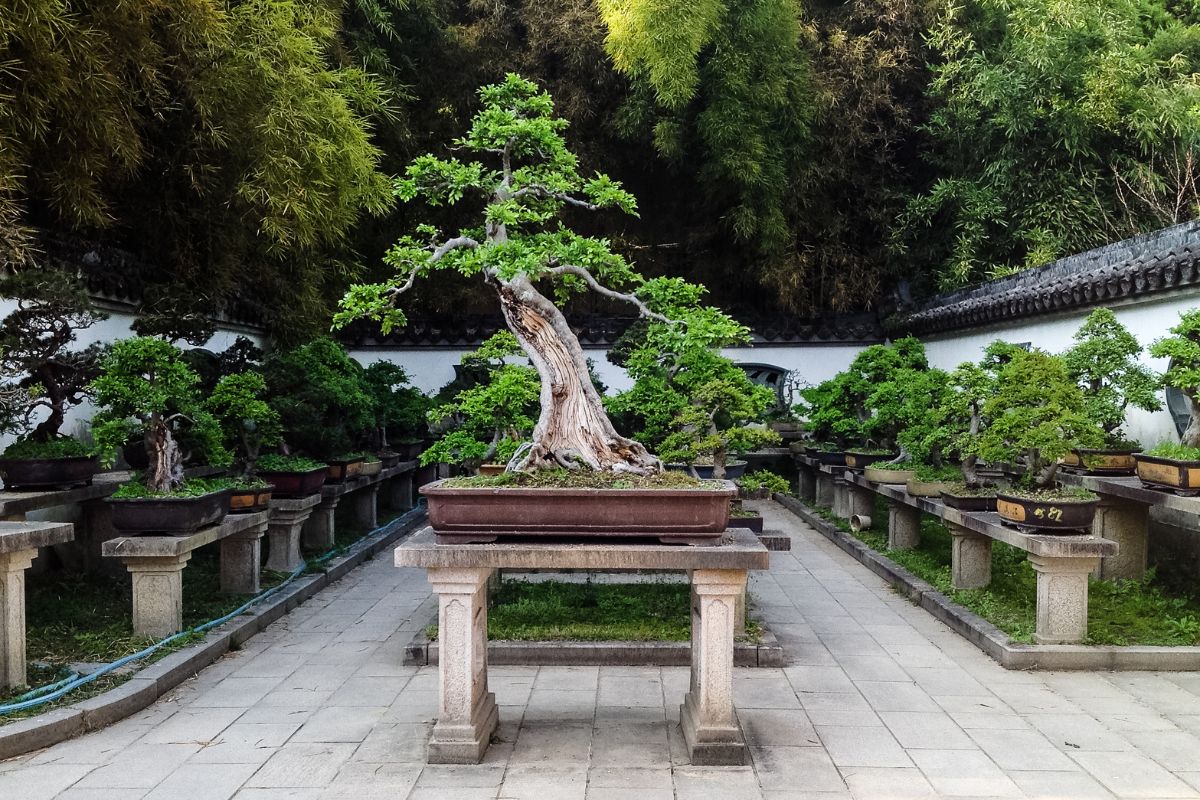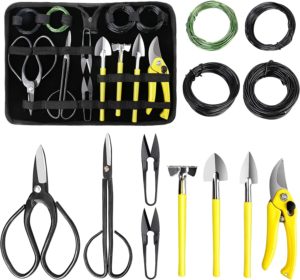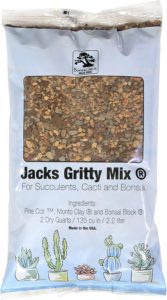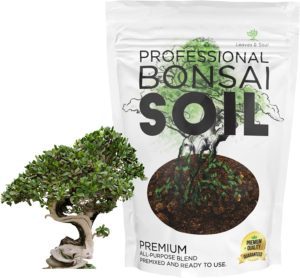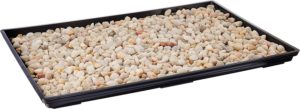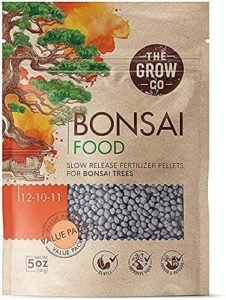Key takeaways:
- Bonsai trees can live for a very long time, with some living for centuries
- The lifespan of a bonsai tree depends on various factors, such as the species of the tree, how well it is cared for, and its environment.
- Different species of bonsai trees can have varying lifespans. For example, the Ficus species can live for centuries with the right care, while the Juniper species typically only lives for around 50 years.
- The life expectancy of a bonsai tree is also affected by the age of the tree, the longevity of the mother tree, and how it is cared for
- To help a bonsai tree live as long as possible, it is essential to give it the proper care and conditions to grow and thrive. This includes pruning the tree, using the appropriate type of soil, and providing adequate amounts of water and light.
- Additionally, keeping the tree at the right temperature, using the proper fertilizer, and taking care of any pest problems can also help to extend its lifespan.
Many people wonder about the average lifespan of bonsai trees considering their miniature structure and confinement to a small pot. The truth is, though, many bonsai trees could live for hundreds (thousands!) of years in their natural habitat. And bonsai trees are just miniature versions of these natural trees that can live for centuries.
The good news: Bonsai enthusiasts can enjoy their indoor bonsai trees for their entire lives!
How long bonsai trees can live depends on several factors such as its species, growing conditions, protection from disease and pests, and other aspects that affect its health.
Let’s go through everything you need to know so that your indoor bonsai can live a long and healthy life.
How long can bonsai trees live?
A bonsai plant is expected to have the same lifespan as their parent trees. For instance, there are trees that slowly wither once they reach 100 years old while other species grown in the wild can live up to 5000 years.
For instance, tree species such as the Birch, Field Maple, Mountain Ash, and Common Alder live between 100 and 120 years when they are grown in the wild. Species that can survive for a longer period (200 to 300 years) include the Common Ash, European Beech, Common Hawthorn, Hornbeam, and Holly. The Willow can live up to 400 years while the Scots Pine is expected to reach up to 500 years. The Yew, however, can outlive all these species as it has a life expectancy of 5000 years.
When cultivated as bonsai, the lifespan of these tree species are expected to be greater since they are more pampered and protected from harsh elements.
Theoretically, a bonsai tree can live decades beyond its typical lifespan when it is shielded from the worst natural elements such as pests, extreme weather conditions and common plant diseases. In addition, ideal growing conditions and continual pruning ensure the tree’s excellent condition and vigor.
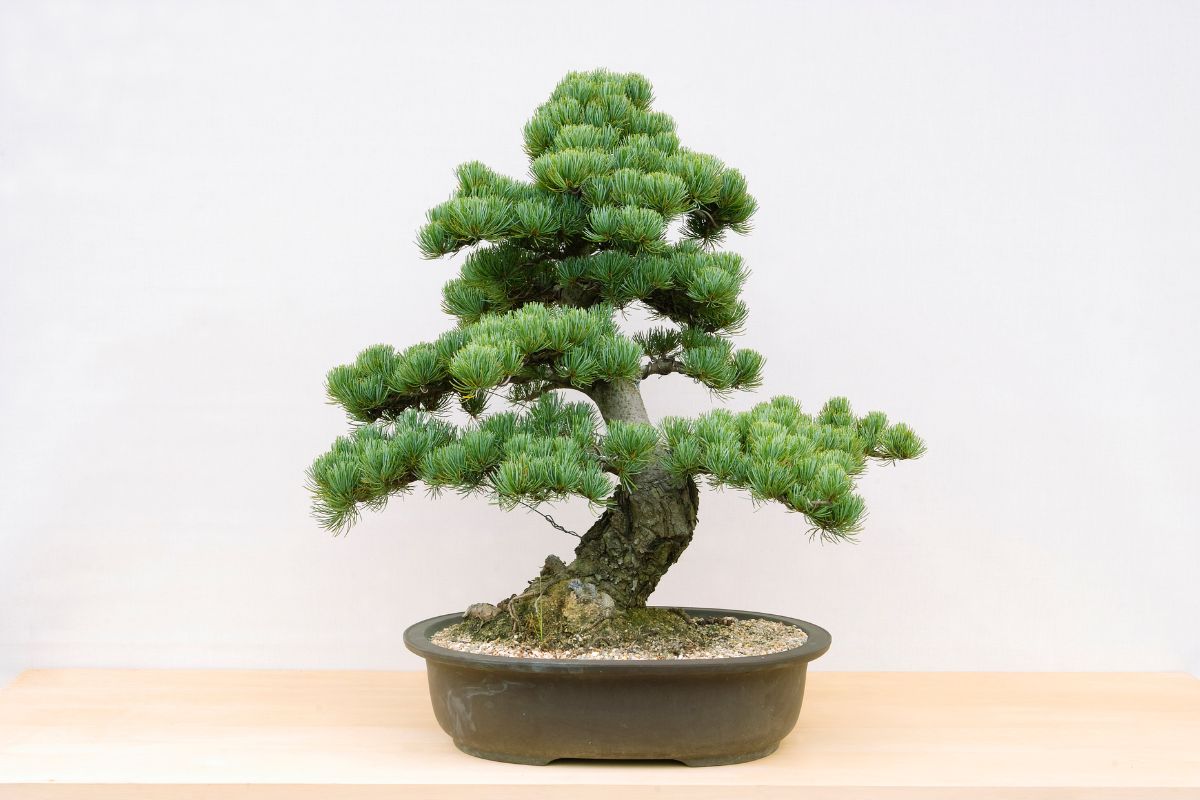
The species
It is important to keep in mind that different species of bonsai trees have different lifespans. For instance, a Juniper bonsai tree’s lifespan is much shorter compared to a pine bonsai tree which can live for several decades. Other long-living species include Japanese maple, cedar, cherry, and azalea, and ficus bonsai trees. On the other hand, boxwood, crape myrtle, and jade bonsai trees typically have short lifespans. If you want a bonsai tree that lasts for a long time, then begin by choosing a natural tree that has a long lifespan in its natural habitat.
| Species | Tree Type | Lifespan in the wild |
| Ash | Deciduous | 50-65 years |
| Azalea | Broadleaf Evergreen | 50 years |
| Bougainvillea | Broadleaf Evergreen | 50 years |
| Boxwood | Broadleaf Evergreen | 20-30 years |
| Cedar | Pines and Conifers | 300+ years |
| Cherry | Deciduous | 15-30 years |
| Chinese elm | Deciduous | 50-150 years |
| Citrus | Broadleaf Evergreen | 40-80 years |
| Desert rose | Deciduous | 500+ years |
| Jade | Broadleaf Evergreen | 100+ years |
| Ficus | Broadleaf Evergreen | 20-40 years |
| Fir | Pines and Conifers | 500+ years |
| Fukien tea | Broadleaf Evergreen | 100+ years |
| Gingko | Deciduous | 1,000+ years |
| Jacaranda | Deciduous | 50-200 years |
| Juniper | Pines and Conifers | 600+ years |
| Japanese maple | Deciduous | 100+ years |
| Money tree | Broadleaf Evergreen | 30 years |
| Myrtle | Broadleaf Evergreen | 50 years |
| Oak | Deciduous | 150-300+ years |
| Pine | Pines and Conifers | 100–1,000 years |
| Pomegranate | Deciduous | 200+ years |
| Redwoods | Pines and Conifers | 2,000 – 3,000+ years |
| Spruce | Pines and Conifers | 600+ years |
| Trident maple | Deciduous | 100 years |
| Weeping willow | Deciduous | 30 years |
| Wisteria | Deciduous | 50 years |
Longevity of the mother tree
The life expectancy of a bonsai tree is also affected by the age of the tree and the longevity of the mother tree. For instance, if the bonsai tree comes from a very old and long-living mother tree, then its life could be much longer than if it came from a younger, not-so-long-living mother tree.
Care and maintenance
To help a bonsai tree live for as long as possible, it is essential to give it the proper care and conditions required for growth and thriving. This includes pruning the tree, using the appropriate type of bonsai soil, providing adequate amounts of water and light, keeping the tree at the right temperature, using the proper fertilizer, and taking care of any pest problems. Following these steps can significantly extend the life of a bonsai tree.
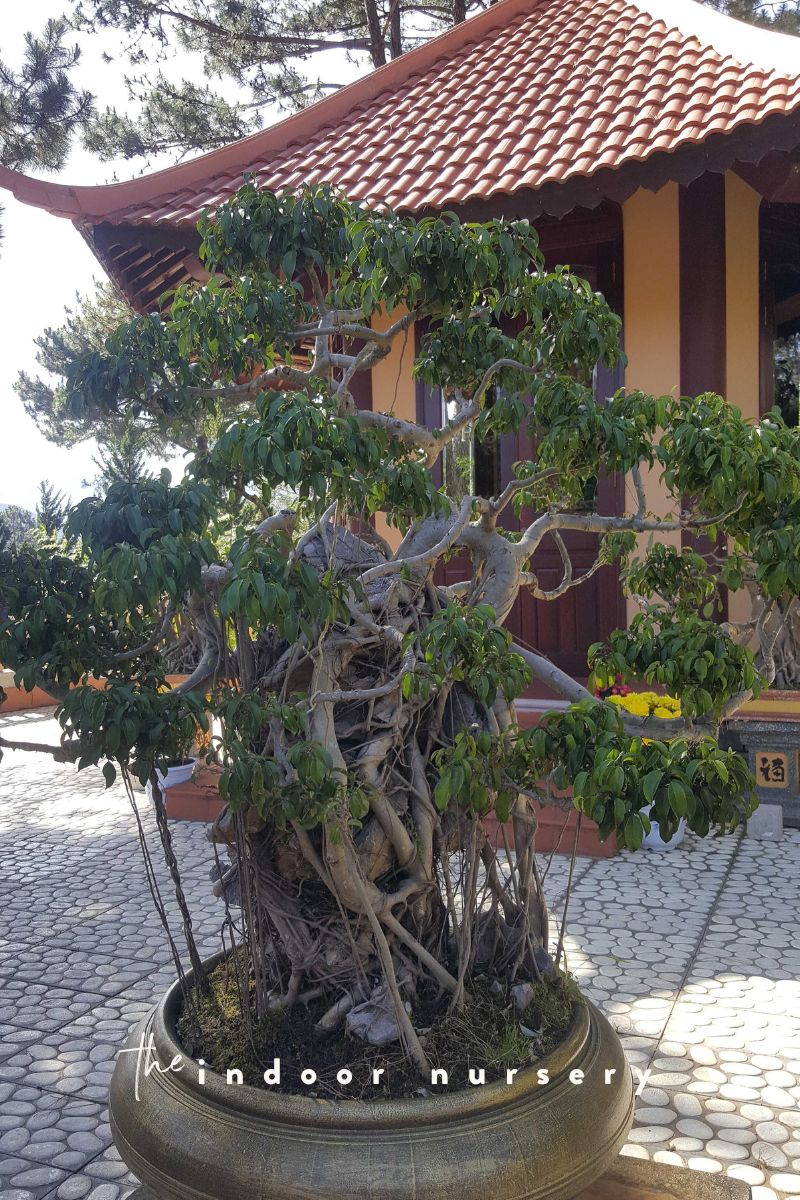
Oldest living bonsai tree
One of the oldest bonsai trees that still lives at present is the five-needle bonsai pine that is known as the Sandai-Shogun-No Matsu. The tree is said to be about 500 years old, and it is considered Japan’s national treasure. According to researchers, the tree was cultivated initially in the 17th century, during the 1600s. Its parent tree, the White Pine, has lived for over 500 years. The tree has a height of 81 centimeters, and it has powerful and elegant trunks, stable form and excellent balance that make it a true masterpiece.
The oldest bonsai tree that lives today is said to live in Crespi, Italy and is a ficus bonsai tree. This well-cared for ficus bonsai is said to be 1,000 years old, proving that ideal care and protection can extend a bonsai’s life expectancy significantly. The bonsai tree lives on and is on display in the Crespi Bonsai Museum.
How to tell the age of a bonsai plant
The only reliable means of determining the actual age of a tree is by counting its rings located at the base part of the trunk. However, you can estimate the tree’s age by finding out the year when it was first propagated from a cutting or seed. You may also count the rings found on old branches that you have removed from the tree for an idea about its age.
How to increase bonsai tree lifespan
If you want to ensure your bonsai plant’s long life, then you should apply the right maintenance techniques. Most bonsai trees that are well-maintained can live several years beyond their expected life span. Make sure you prevent unpleasant conditions that can have a negative impact on the tree’s health such as over-fertilizing, excessive watering, and too much exposure to direct or full sunlight and harsh weather conditions.
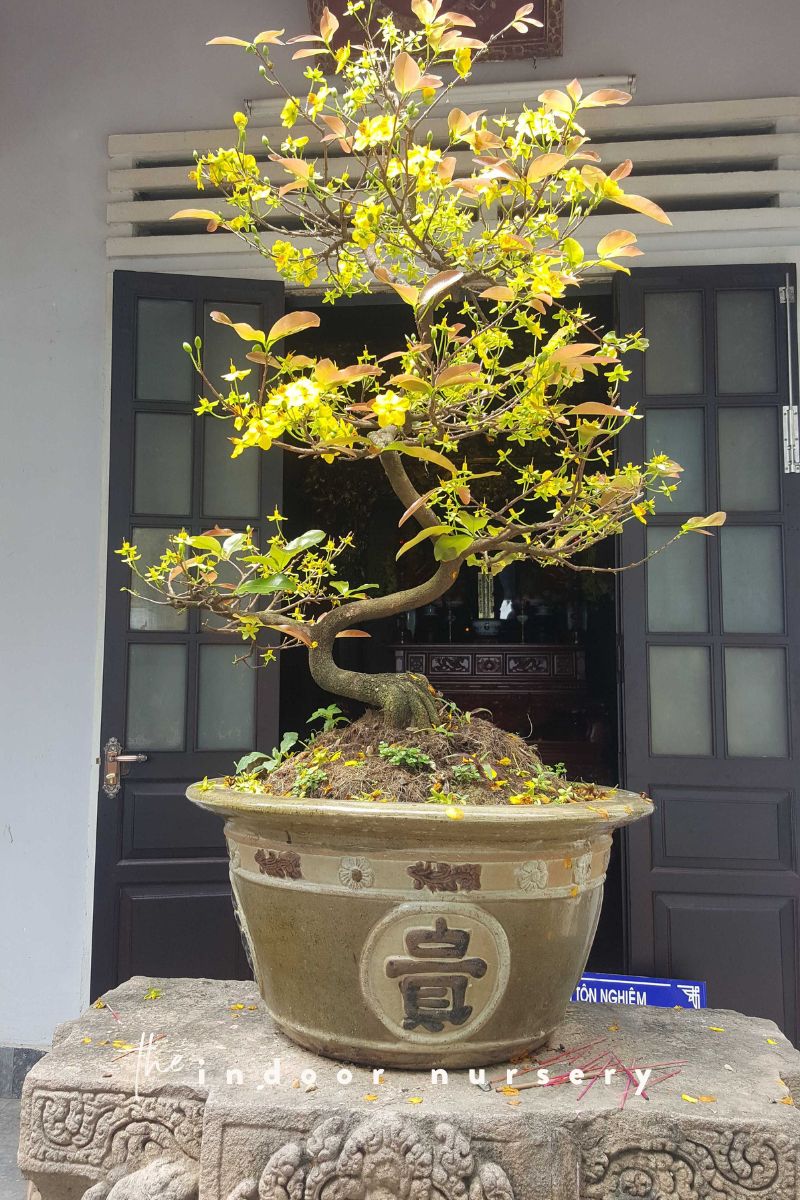
Pruning
Pruning is an important activity to keep your bonsai tree in good shape and maintain its healthy, vibrant look. Pruning lets the bonsai plant focus on producing branches and leaves instead of creating new growth. It also encourages new shoots and leaves to grow, which results in a thick, healthy tree. Moreover, pruning also helps remove deadwood, overgrown branches, and weak spots that can weaken your bonsai tree’s structure. Lastly, it allows you to create balanced and artistic forms that add to the overall beauty of your beloved bonsai tree. Check out the different types of bonsai styles you can try.
Soil
The right soil mix contributes a lot to a good tree’s life expectancy. Use a well-draining soil mix to help ensure your tree’s good health throughout its lifetime. You can also add some organic matter or fertilizers to give your bonsai the nutrients it needs. For example, if you’re growing an evergreen bonsai, you can use a soil mix composed of equal parts of soil, sand, and peat moss to promote good drainage and aeration.
Watering
Adequate watering is essential for any bonsai’s health. Check the soil every day to determine if your bonsai tree needs more water. Choose the right watering schedule to keep your tree healthy. For example, you can use a small watering can with a humidity tray or dunk your bonsai tree in filtered water periodically. Avoid over watering as this can lead to diseases, root rot, or even death of your bonsai tree. If you’re in a dry environment, then try to maintain consistent soil moisture levels. If you’re in a humid environment, then allow the soil to get slightly dry before watering again.
Temperature & light
Provide the right temperature environment and adequate sunlight exposure to prolong your bonsai tree’s life. Make sure your tree has enough light to grow and develop normally without getting burned by direct sunlight. Because some species may require more light than others, pay attention to the light requirements of your specific bonsai tree. The right temperatures can also help increase the tree’s lifespan, since some bonsai species can suffer in extreme temperatures.
Fertilizing
Fertilizing your bonsai tree is important in helping it develop strong branches and a full foliage. Use a fertilizer that is specifically formulated for bonsai trees and adjust the dosage according to the size of your tree and its needs. Also, it’s important to fertilize your tree according to the seasons. For example, fertilize your tree more often during its growing season and less often during the colder months. Too much fertilizer can be detrimental to your bonsai’s health.
Pests & diseases
Avoiding pests and diseases is key to having a healthy and long-living bonsai tree. Make sure to keep an eye out for any signs of pests or diseases, such as changes in the foliage or discolorations in the bark, and address the problem right away. You can use insecticidal soaps, horticultural oils, or natural predators like ladybugs to prevent and/or control any pest infestations. Also, keep your tree away from any potential sources of disease, such as other diseased bonsai trees or water sources with high concentrations of pollutants.
Best types of bonsai tree for longevity
Some of the best bonsai trees for longevity are hardy varieties that can withstand a wide range of temperatures, light levels, and soil types. Examples of these are five-needle pines, cedar trees, juniper trees, Japanese black pines, Japanese white pines, and Japanese red pines. Other bonsai trees that live longer and are easy to maintain include spruce, boxwood, and maple.
learn more about bonsai plants
- How to keep bonsai leaves small
- How long do bonsai trees live? Longer than you.
- How to care for your Japanese black pine bonsai
- How to grow aqua bonsai (water bonsai)
- How to care for a Red Maple bonsai tree
- Pomegranate bonsai tree care guide for beginners
- 15 bonsai styles and shapes that will inspire you
- Bonsai palm tree care: How to care for palm tree bonsais

